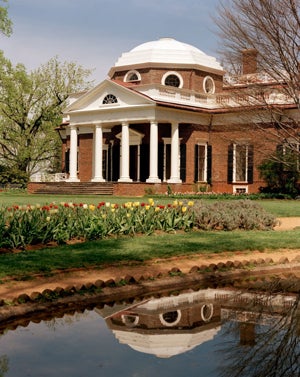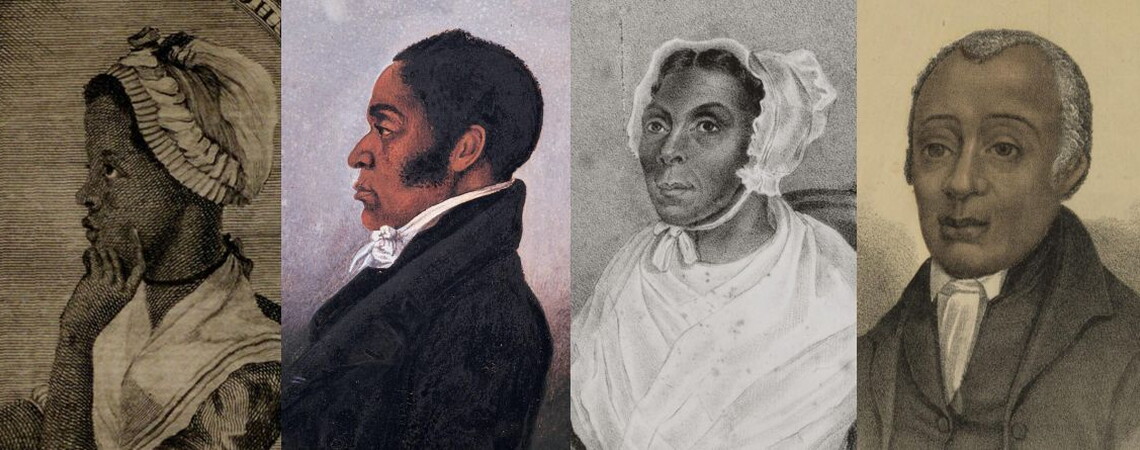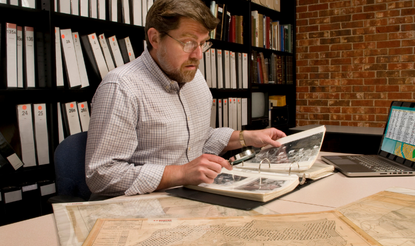Sally Hemings: Given Her Time
by Jon Kukla
Sally Hemings claims a special place in American history. Her experiences were both commonplace and extraordinary, from plantation life in Virginia to the diplomatic whirl of Paris and back. Born into slavery in an age and culture that placed extreme limits on all women, Sally Hemings spent every moment of her life negotiating the junctures of race, gender, family, plantation life, slavery, and political culture in early America. Born into slavery in 1773, her achievement was remarkable. She died in 1835 in modest security and relative freedom—given her time, in the language of the day—comforted by the fact that all her children had escaped the hopeless bonds of enslavement for lives of promise as free Americans.
 The most controversial aspect of Sally Hemings’s life, her relationship with Thomas Jefferson, had become public in 1802 when an angry journalist, James Callender, proclaimed that “the man, whom it delighteth the people to honor, keeps, and for many years past has kept, as his concubine, one of his own slaves. Her name is SALLY.”[1] Callender’s assertion has been disputed ever since he printed it. The available evidence suggests that he was essentially correct—that Thomas Jefferson fathered six children born to Sally Hemings between 1795 and 1808—but the nature of their relationship was far more complex. Sally was family—the half-sister of Jefferson’s wife, Martha Wayles, who died in 1782.
The most controversial aspect of Sally Hemings’s life, her relationship with Thomas Jefferson, had become public in 1802 when an angry journalist, James Callender, proclaimed that “the man, whom it delighteth the people to honor, keeps, and for many years past has kept, as his concubine, one of his own slaves. Her name is SALLY.”[1] Callender’s assertion has been disputed ever since he printed it. The available evidence suggests that he was essentially correct—that Thomas Jefferson fathered six children born to Sally Hemings between 1795 and 1808—but the nature of their relationship was far more complex. Sally was family—the half-sister of Jefferson’s wife, Martha Wayles, who died in 1782.
After John Wayles, Jefferson’s father-in-law, had lost his third wife in 1761, he lived openly with an enslaved woman he owned, Elizabeth Hemings. They had six children together, and Sally was the youngest. Betty Hemings was barely a teenager when she had come to live at The Forest, near Williamsburg, after Wayles married Martha Eppes, his first wife and the mother and namesake of Jefferson’s wife. The daughter of an English sea captain named Hemings and a “full-blooded African” woman enslaved by the Eppes family, Betty was “a bright mulatto woman,” recalled Isaac Jefferson, youngest son of Jefferson’s trusted slaves George and Ursula.
John Wayles’s connection with Betty Hemings was far from unique in colonial Virginia. Relationships between White planters and their female slaves were not uncommon, although extant evidence about them is often sketchy.
When Jefferson’s eldest grandson, Thomas Jefferson Randolph, gave the biographer Henry S. Randall a tour of Monticello, he acknowledged the presence of enslaved “children which resembled Mr. Jefferson so closely that it was plain that they had his blood in their veins.” Born in 1792, Thomas Jefferson Randolph spoke from his direct personal observations. According to Randall, “He said in one case that the resemblance was so close, that at some distance or in the dusk the slave, dressed in the same way, might be mistaken for Mr. Jefferson.” On another occasion, Randolph recalled,
A gentleman dining with Mr. Jefferson, looked so startled as he raised his eyes from [Jefferson] to the servant behind him, that his discovery of the resemblance was perfectly obvious to all. Sally He[m]ing was a house servant and her children were brought up house servants—so that the likeness between master and slave was blazoned to all the multitudes who visited this political Mecca.[2]
The presence at Monticello of enslaved light-skinned mulatto people who were somehow related to Jefferson’s family could not be denied. Randolph attributed the paternity of Sally Hemings’s children to Jefferson’s nephews Peter and Samuel Carr, sons of his sister Martha, but that attribution was contradicted by DNA testing in the 1990s.
⁕
Details about Sally Hemings’s life are scant.[3] In January 1774, when John Wayles’s estate was settled, she was probably living with her mother and siblings at Guinea Plantation in Cumberland County, between the Appomattox and James Rivers southeast of Monticello. Soon thereafter, Betty Hemings and her children moved to Goochland County, where Jefferson and his wife had inherited Elk Hill plantation, midway between Richmond and Charlottesville. Two-year-old Sally Hemings moved with her family to Monticello about 1775. At age eleven, she accompanied Jefferson’s youngest daughters, Mary and Lucy, to Chesterfield County when Jefferson accepted a diplomatic post in Paris two years after his wife’s death.
Jefferson’s eldest daughter Martha, or Patsy, accompanied him to France in 1784 and was enrolled at the Abbaye Royale de Panthémont, a convent school favored by English families in Paris. Mary and Lucy were left in the care of Jefferson’s sister-in-law, Elizabeth Wayles Eppes, at Eppington on the Appomattox River south of Richmond, where she and Francis Eppes had two small children of their own. Whooping cough swept through their nursery that autumn. Lucy Jefferson, aged two-and-a-half, and her cousin Lucy Eppes, died. The Eppes’s son Bolling and Jefferson’s six-year-old daughter Mary, or Polly, survived the disease.
Upon learning of the tragedy, Jefferson began planning to retrieve Mary from Virginia and have her join her elder sister at Panthémont. Arranging safe transport took two years. Jefferson worried about who would escort her. “Some good lady passing from America to France, or even England, would be most eligible,” he told the Eppeses. “But a careful gentleman who would be so kind as to superintend her would do. In this case some woman who has had the small pox must attend her. A careful negro woman, as Isabel, for instance, if she has had the small pox, would suffice under the patronage of a gentleman.”[4] Almost thirty and with several children of her own, Isabel Hern was a “careful negro woman” and her husband, David Hern, was a skilled artisan at Monticello. Both were familiar to Jefferson and his sister-in-law, for they were among the enslaved people that Jefferson and his wife inherited from the Wayles estate.[5]
Elizabeth and Francis Eppes booked Polly Jefferson’s voyage to France in May 1787 but by then Isabel Hern was recovering from the recent birth of her daughter Edith, the fifth of her twelve children. Unable to send Isabel, the Eppeses chose Sally Hemings as Polly’s escort instead. It was a huge responsibility for any fourteen-year-old, but Sally must have earned their confidence. Several letters are known to have gone astray between Eppington and Paris during these months, but presumably they sent some explanation of their decision to Jefferson. Like many other young enslaved girls in Virginia and the South, Sally Hemings probably had several years’ experience assisting with Polly’s care and had demonstrated traits ascribed to her by an anonymous observer in 1802 as “an industrious and orderly creature in her behavior.”[6] The decision may also have been influenced by the fact that Sally’s brother James Hemings had accompanied Jefferson to Paris and was learning the mysteries of French cuisine.
“Sally Hemings went to France with Maria Jefferson when she was a little girl,” the overseer Edmund Bacon remembered many years later. “They crossed the ocean alone. I have often heard her tell about it.”[7] She and Polly landed at London in June 1787. They stayed several weeks in the home of John Adams, Jefferson’s diplomatic counterpart in Britain, until Adrien Petit, Jefferson’s French butler, arrived to escort them across the Channel. John Adams never mentioned the girls in his correspondence with Jefferson, but Abigail promptly informed Jefferson of the girls’ safe arrival. “The old Nurse whom you expected to have attend her was sick and unable to come,” Abigail reported in her first letter to Jefferson. Polly “has a Girl about 15 or 16 with her, the Sister of the Servant you have with you.” The next day Abigail said a little more about Sally Hemings (without ever mentioning her name). “The Girl who is with [Polly],” Adams wrote, “is quite a child, and Captain Ramsey is of opinion will be of so little Service that he had better carry her back with him. But of this you will be the judge. She seems fond of the child and appears good natur[e]d.”[8]
During her two years in Paris, from July 1787 through September 1789, Sally Hemings may have resided intermittently at Jefferson’s residence, the Hôtel de Langeac. More of her time was spent at the Abbaye de Panthémont, however, where Patsy and Polly Jefferson were boarding students. A few months after her arrival, she was inoculated for small pox. While in Paris, Sally was trained in needlework and the care of clothing, in accord with her responsibilities. Her training included a five-week sojourn with Jefferson’s laundress in the spring of 1789, where she may also have benefited from an immersion in the language and culture. When Jefferson and his household returned to Virginia that autumn, “She was just beginning to understand the French language well,” according to her son Madison.[9] Jefferson occasionally paid Sally Hemings a monthly wage of twelve livres (about $2), half the amount that her brother received regularly. His French servants earned between $8 and $12 a month.
When Patsy Jefferson began to participate in French society in the spring of 1789, Sally Hemings’s role as an attendant to his eldest daughter was reflected in the greater sums that Jefferson spent on clothing and accessories for her and his daughters. Sally Hemings’s domestic role was also explicit in Jefferson’s arrangements for their return voyage to America. “I shall have occasion for three master b[e]rths,” Jefferson specified, “for [my]self and two daughters of 17 and 11 years of age, and b[e]rths for a man and woman servant, the latter convenient to that of my daughters.”[10]
⁕
Once she had returned to Monticello, Sally Hemings worked as a household servant for the rest of Jefferson’s life. Her son Madison later said that his mother’s duties were “to take care of [Jefferson’s] chamber and wardrobe, look after us children and do such light work as sewing, etc.”[11] Looking after their own children was a luxury few other enslaved women enjoyed in eighteenth-century Virginia, but as overseer Edmund Bacon recalled of the Hemings women, “I was instructed to take no control of them. They had very little to do.”[12] As late as December 1799—two years after Polly Jefferson had married John Wayles Eppes and moved with him to Eppington—Jefferson still referred to Sally Hemings as “Maria’s maid.” Without any mention of paternity, he informed the Eppeses that “Maria’s maid produced a daughter about a fortnight ago, and is doing well,” though the infant daughter died soon thereafter.[13]
Upon her return to Monticello, Sally Hemings probably lived with her elder sister Critta Hemings in the stone house known as the Weaver’s Cottage on Mulberry Row, the slave quarter overlooking the vegetable gardens immediately east of the main house. Four years later, Sally and Critta probably moved into one of three new log cabins, twelve by fourteen feet in size, built on Mulberry Row in 1793. Finally, sometime between 1803 and 1807, Sally Hemings moved into a masonry room near the eastern end of the “south dependency.” There is no evidence that Sally Hemings ever left Monticello until 1827, a year after Jefferson died, when she moved to Charlottesville and lived with her youngest sons.
In the 1850s, Jefferson’s grandson Thomas Jefferson Randolph showed a visitor to Monticello “a smoke blackened and sooty room in one of the collonades”—known today as the south dependency—“and informed [him that] it was Sally He[m]ings’ room.” These servants’ rooms, according to overseer Edmund Bacon, “were very comfortable, warm in the winter and cool in the summer.”[14] There is no documentary evidence indicating that Sally Hemings ever resided inside the main house at Monticello. The location of her room, beneath the terrace just outside the windows of Jefferson’s study and library, allowed easy access by stairs to the first floor of the main house and Jefferson’s private quarters. (All these places are now prominently exhibited at Monticello.)
⁕
Like many other professional historians prior to the publication of Annette Gordon-Reed’s path-breaking Thomas Jefferson and Sally Hemings: An American Controversy in 1997, I had previously regarded a study of “The Jefferson Scandals” written in 1960 by Douglass P. Adair and posthumously published in 1974 as the most reliable assessment of the evidence about Jefferson and Hemings. A quarter of a century ago, however, Gordon-Reed exposed the glaring inconsistencies in prevalent scholarship and demonstrated that the memories and oral traditions of Black American families had been denied a fair hearing. Soon thereafter, the results of DNA testing bolstered her transformational scholarship while also refuting some alternative paternity claims.
To this day, however, I remain uncertain about when the sexual relationship between Jefferson and Hemings began. When James Callender proclaimed in 1802 that Jefferson kept Sally Hemings as his “concubine,” he also asserted that “the name of her eldest son is Tom.”[15] The oral traditions of the Hemings and Woodson families assert that sixteen-year-old Sally was pregnant in Paris, France by 1789. “My mother became Jefferson’s concubine,” Madison Hemings explained, “and when he was called back home she was enciente by him. He desired to bring my mother back to Virginia with him but she demurred.” Because slavery was illegal in France (although not in its colonies), Madison Hemings believed that his mother could have claimed her freedom in Paris but “if she returned to Virginia she would be re-enslaved. So she refused to return with him.” As a result, according to Madison Hemings, Jefferson “promised her extraordinary privileges, and made a solemn pledge that her children would be freed at the age of twenty-one years,” and “in consequence of his promise . . . she returned with him to Virginia.” Then, “soon after their arrival, she gave birth to a child, of whom Thomas Jefferson was the father. It lived but a short time.”[16]
Madison Hemings’s narrative explains, perhaps too neatly, his mother’s decision to return to Virginia rather than seek freedom under French law. To be sure, James and Sally Hemings could have sued for their freedom while in Paris. On the other hand, the legal process itself—hiring a lawyer, petitioning the French court of admiralty, and pressing a lawsuit—was neither simple nor inexpensive. Reasonable people can disagree, but I find it difficult to suppose that sixteen-year-old Sally Hemings, regardless of whether she was pregnant, would have chosen to stay in France once her elder brother had decided in favor of returning to America after negotiating the promise of emancipation (fulfilled in September 1793) upon the condition that he train another cook for the kitchen at Monticello.
In Madison Hemings’s narrative, the child conceived in France “lived but a short time,” but another family’s tradition contends that the child lived and became known as Thomas Woodson. Whether anyone known as Tom Woodson had a connection to the Hemingses of Monticello has been debated for many years, but it seems to have been answered with certainty by DNA testing in 1998. There is no genetic connection between the Woodson and Jefferson or Hemings families. So if Sally Hemings was not pregnant at sixteen when she returned from Paris, when did her relationship with Jefferson begin? The answers that I found plausible were October 1793 (when Jefferson visited Monticello for the first time in more than a year) or January 1794 (nine months prior to the birth of Sally Hemings’s first child, Harriet, on October 5, 1795).
Jefferson had been secretary of state in President George Washington’s first cabinet from 1790 through December 1793, when he retired, exhausted. On December 31, 1793, he submitted his resignation and returned to Monticello with the intention of retiring forever from public life. “The little spice of ambition I had in my younger days has long since evaporated,” he explained to James Madison. “My health is entirely broken down,” he lamented, and “my age requires that I should place my affairs in a clear state.”[17] We know that he lived three more decades, but Jefferson apparently felt he had only a few more years to live.
Freed at last from the constraints of public life, Jefferson devoted himself to his crops, a new nail-making business, and a round of remodeling at Monticello. This was the moment, I suspect, that he encountered Sally Hemings not as his daughter’s teenage maid but rather as a “decidedly good looking” woman[18] who spoke some French and had seen more of the world than most women in America, regardless of their status or station. A young woman now about the age of the young widow he had courted at The Forest and then lost—her half-sister.
⁕
Sally Hemings was sixty-one years old when her biological step-niece, Martha Jefferson Randolph, woke in a panic in the middle of the night in the spring of 1835. Hemings had left Monticello after Jefferson died in 1826 and was living in Charlottesville in the care of her youngest sons. Martha, now sixty-three, had managed the sale of Monticello after her father’s death and was staying at Edgehill, the home of her estranged husband, in the company of two of her daughters. The exact nature of the medical emergency that woke the household at Edgehill was not recorded, but it threatened Martha’s life and prompted her to dictate death-bed instructions to her daughters.
The result is a hastily composed will, dated “April 18th [at] 2 o’clock in the Morning” and “written by Mama’s request” by the president’s grand-daughter Virginia Jefferson Randolph Trist. In fewer than one-hundred-fifty words, the short document recorded Martha’s wishes about the division of her money, her books, and a few special pieces of family silver. Three young slaves were to be set free—and then it acknowledged the sacred duty that Thomas Jefferson had entrusted to his eldest daughter: “To Betsy Hemings, Sally & Wormley I wish my children to give their time. If liberated they would be obliged to leave the state of Virginia.”[19]
Granting of time was an informal practice designed to evade the manumission laws of the Commonwealth of Virginia, which had restricted Jefferson’s options in 1826 just as they limited Martha’s options eight years later. Sally Hemings was fifty-three when Jefferson died in 1826, but Virginia law effectively prohibited the manumission of slaves older than fifty in order to protect elderly slaves from being abandoned by unscrupulous masters. Moreover, because Jefferson and his Virginia contemporaries could not imagine a racially mixed society, the law provided that slaves who did gain their freedom were legally required to leave the state within one year. Although often ignored, this requirement put Virginia’s relatively small population of free people of color at constant risk.
Precisely because it was an informal procedure aimed at evading the law, written evidence about granting time to slaves is not as common as the practice itself may have been. When granting of time is mentioned in Virginia court records, however, there is usually an obvious biological connection between the slaveholder and the favored slave.
In 1826 Thomas Jefferson prepared a codicil to his will to protect Sally Hemings and their children. Martha Jefferson Randolph was equally circumspect when she hastily dictated instructions in the wee hours of that Friday morning in April of 1834. Regardless of his silence and her circumspection, however, Martha’s death-bed stipulation that Sally Hemings, her niece Betty, and her nephew Wormley were to be given “their time” protected Sally Hemings until her own death the next year—and sends a clear message to posterity.
[1] Richmond Recorder, Sept. 1, 1802. The remainder of Callender’s stories about Sally Hemings appeared in the Recorder on September 22, 29, November 5, and December 1, 1802. In addition to my chapter on Sally Hemings in Mr. Jefferson’s Women (New York: Alfred A. Knopf, 2007), pertinent accounts include Annette Gordon-Reed, The Hemingses of Monticello (New York: W.W. Norton & Company, 2009); Catherine Kerrison, Jefferson’s Daughters: Three Sisters, White and Black, in a Young America (New York: Ballantine Books, 2019); Joshua D. Rothman, “An Extraordinary Family and the Burdens of Slavery: A Review Essay,” Journal of Southern History 75 (2009): 399–414; and Suzette Spencer, “Historical Memory, Romantic Narrative, and Sally Hemings,” African American Review 40 (2006), 507–531.
[2] Henry S. Randall to James Parton, June 1, 1868.
[3] Biographical information is conveniently gathered in “Sally Hemings and Her Children: Information from Documentary Sources,” Report of the Research Committee on Thomas Jefferson and Sally Hemings, Thomas Jefferson Foundation (January 2000), Appendix H; available on the Monticello website (www.monticello.org).
[4] Jefferson to Francis Eppes, August 30, 1785, Papers of Thomas Jefferson, 15: 621–22.
[5] Lucia Stanton, Free Some Day: The African-American Families of Monticello (Charlottesville, 2000), 58–60.
[6] Fredericktown Herald (Maryland), reprinted in Richmond Recorder, December 8, 1802.
[7] Edmund Bacon’s recollections in Hamilton Wilcox Pierson, ed., Jefferson at Monticello: The Private Life of Thomas Jefferson (1862), reprinted in James A. Bear, ed., Jefferson at Monticello (Charlottesville, 1967), 100.
[8] Abigail Adams to Thomas Jefferson, June 26 and June 27, 1787, Papers of Thomas Jefferson, 11: 501–503.
[9] Memoirs of Madison Hemings, Pike County Republican, March 13, 1873, quoted in Annette Gordon-Reed, Thomas Jefferson and Sally Hemings: An American Controversy (Charlottesville: University of Virginia Press, 1997), 246.
[10] Thomas Jefferson to James Maurice, September 16, 1789, Papers of Thomas Jefferson, 15: 433.
[11] Memoirs of Madison Hemings, quoted in Gordon-Reed, Thomas Jefferson and Sally Hemings, 248.
[12] Edmund Bacon’s recollections quoted in Bear, Jefferson at Monticello, 100.
[13] Thomas Jefferson to John Wayles Eppes, December 21, 1799, Special Collections, University of Virginia Libraries. Founders Online, National Archives, https://founders.archives.gov/documents/Jefferson/01-31-02-0233 .
[14] Henry S. Randall to James Parton, June 1, 1868, quoted in Gordon-Reed, Thomas Jefferson and Sally Hemings, 254; Edmund Bacon’s recollections quoted in Bear, Jefferson at Monticello, 46.
[15] Richmond Recorder, September 1, 1802.
[16] Memoirs of Madison Hemings, quoted in Gordon-Reed, Thomas Jefferson and Sally Hemings, 246.
[17] Thomas Jefferson to James Madison, April 17, 1795, Library of Congress. Founders Online, National Archives, https://founders.archives.gov/documents/Jefferson/01-28-02-0258 .
[18] Henry S. Randall to James Parton, June 1, 1868, quoted in Gordon-Reed, Thomas Jefferson and Sally Hemings. 254.
[19] Will of Martha Jefferson Randolph, April 18, 1834, Edgehill-Randolph Papers, Special Collections, University of Virginia Library.



